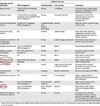- Reaction score
- 732
You can’t compare ref material prices to bulk pricesPricey...
You can’t compare ref material prices to bulk pricesPricey...
I understand prolactin is bad for hair, but wouldn’t a prolactin agonist showing these results completely throw out the window that androgens cause hair loss?Tons of study about how prolactin is bad for hair
Human Scalp Hair Follicles Are Both a Target and a Source of Prolactin, which Serves as an Autocrine and/or Paracrine Promoter of Apoptosis-Driven Hair Follicle Regression - PMC
The prototypic pituitary hormone prolactin (PRL) exerts a wide variety of bioregulatory effects in mammals and is also found in extrapituitary sites, including murine skin. Here, we show by reverse transcriptase-polymerase chain reaction and ...www.ncbi.nlm.nih.gov
If I understand correctly BAY-1158061 is:Well so actually it's not BAY anymore it's DEL
It's an antagonist. It silences the prolactin receptor.Why is this causing hair growth after four years, what’s the method of action? I get it’s a prolactin agonist but how is that tied into AA?
Sorry that’s what I was getting at, but used the wrong word aha.It's an antagonist. It silences the prolactin receptor.
Sorry that’s what I was getting at, but used the wrong word aha.
How would this then encourage hair growth in AA do you reckon?
@pegasus2 Can you confirm this? Or am I lost. Is this del-1-9-G129R-hPRL the molecule the active antibody in BAY-156801?So it actually makes a lot of sense now. del 1-9 G129R hPRL stands for: deleted 1-9 N-terminus G129 Mutation human recombinant prolactin.
«As highlighted by its name, Del1-9-G129R-hPRL is a hPRL core protein containing two modifications: deletion of the nine N-terminal residues, and substitution of Gly129 for an Arg (5).»
Basically it’s a prolactin protein that’s been enginereed to be fucked up.
Disclaimer, I may be wrong though. Need confirmation on this.

We are aware of two companies that have developed neutralizing monoclonal antibodies (mAb) directed against the human PRLR. The first one (LFA102) was recently reported by Novartis in two academic publications [4,22], whereas information of the mAb developed by Bayer (Mat3) can be obtained only from their patents (Ref [23] and citations therein). Basically, both mAbs were shown to efficiently down-regulate PRL-induced activity in vitro and in vivo. Of note, the preclinical validation of LFA102 in cancer models involved the inhibition of endogenous mammary tumors (i.e., non-human tumors) in long-term treated rodent models, whereas evidence for PRLR inhibition in human systems has been restricted to short-term inhibition of PRL-induced Stat5 signaling in breast cancer cells cultured in vitro or xenografted into immunocompromised mice [22]. As expected, LFA102 was shown to increase circulating PRL levels in rats, suggesting interference with negative feedback mechanisms [22]. In contrast to competitive antagonists (Section 3.2), LFA102 does not compete with PRL binding to the receptor (Figure 1C). Although its actual mechanism of action remains uncharacterized, this suggests that LFA102 efficacy may rely more on the mAb/PRLR molar ratio in target tissues than on PRL levels. Whether this provides an advantage over competitive antagonists should be addressed in dedicated experiments. Clearly, one advantage of antibodies over PRL-core antagonists is their long half-life due to their bigger size (~ 150 kDa), which reduces renal clearance.
No, it's not. It's an antagonist, the Bayer one is an antibody. I think the antagonist is probably less effective from what I've read.@pegasus2 Can you confirm this? Or am I lost. Is this del-1-9-G129R-hPRL the molecule the active antibody in BAY-156801?
Ok so the mat3 structure i posted could be the correct one after all?No, it's not. It's an antagonist, the Bayer one is an antibody. It might work better or not as well, it's impossible to say.
Yes, it looks like it.Ok so the mat3 structure i posted could be the correct one after all?
OkYes, it looks like it.
Based on hair diameters, the number of vellus and terminal hairs per cm2 was determined. Both measurements (hair diameters and count) were performed using Datinf TrichoScan Smart Software in semi-automated manner with manual curating. For consistency reasons each region was analyzed by the same observer over time. The obtained data showed an increased terminal hair count in the previously bald region in 9 out of 11 monkeys. The increase in hair count ranged from 50 - 220 hairs/cm2 in responder monkeys (see figure 2B). The effect was observed in male and female monkeys. Younger animals responded better than seniles ones. No plateau of efficacy was reached in 6 months of treatment with the antibody mat3. Best effects with regard to increase of absolute numbers of terminal hairs as well as with regard to percentage increase was observed in previously bald areas, i.e. such areas where vellus hairs were dominating before treatment. Such areas had initially been considered the most difficult to treat since baldness of these areas was preexisting for decades in some of the monkeys. Six months after ceasing the treatment, no further increase of hair diameters or increase of terminal hairs has been observed. However, there was also only a marginal (insignificant) drop from the level reached at the end of the study. The proportion of terminal hairs was significantly higher than before start of treatment 12 months ago, i.e. a long lasting effect of treatment was observed.
Incredible!The top responders got absolutely phenomenal regrowth from this, and at six months the regrowth showed no sign of slowing down in the top responders.
View attachment 157381
